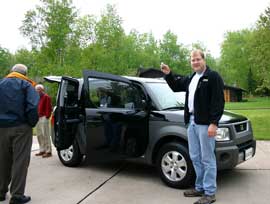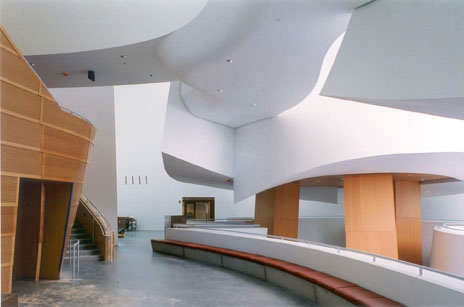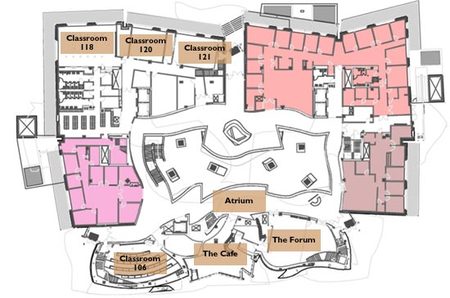Thanks to a 13-year old niece of Boing Boing, I found Badass Buddy. It’s a site with 1,200 AIM free buddy icons, a collection which, over 2+ years, has evolved from simple riffs on the little AOL dude (you know, the one who hooked up with Sharon Stone) into a unique medium of its own.



In addition to the predictable ones–Fart, Spongebob, Jackass, School Sucks– BAB has created little narratives that are HI-larious, timely, touching, and pretty damn cool. To tell these tiny stories, BAB sometimes treats the icon window as a screen, or as a camera. And they adapted some recognizably cinematic visual language, including “camera” angles and movement (e.g., pans, zooms), lighting effects, editing (shot/reverse-shot, establishing/close-up, jump cuts), even Bullet Time.





But they also play off the unique characteristics of the medium–a medium which was probably never intended as one, but which has been embraced and exploited to express the worldview of an IM generation.




But as soon as I try to decide which buddy icon I’m gonna use, an alarm sounds in my head, which brings me to the Honda Element. It’s ugly, I know, but I like it, and I kinda want one. The wife’s worried it might be Pontiac Aztek-ugly (i.e., lame and embarassing) but my gut tells me it’s Citroen 2CV-ugly (i.e., cool and if you just don’t get it, you’re lame). I’m almost always right about that kinda stuff, though; that’s not the problem.
The problem is something new to me, age-appropriateness. According to Honda, the Element was designed as a “dorm room on wheels.” According to the auto industry’s demographic master strategy, I shouldn’t want a “dorm room on wheels” any more than I want a “living room on wheels.” But even if there were a “loft on wheels,” my indignation at being so target marketed would probably keep me from buying it. (It’s a Gen-X thing, you wouldn’t understand. Unless you read Newsweek.)

But if I buy an Element, I worry about two equally bad scenarios: 1) it’s only marketed as designed for the under-30 demo, which means it appeals only to people over 35, who try too hard. I buy one and subsequently telegraph my aging wannabe-ness. Call this the Miata Scenario, and if you’re old enough to remember the launch of the Miata, give up. It’s already too late for you. 2) it’s actually designed for the under-30 demo, and they embrace it. I buy one and become as lame as when your dad starts saying he’s “down with that, yo” to you. Call this one the Badass Buddy Scenario.




 Sure, I could write how the rave reminds me of that annoying “let’s target the ‘urban’ demographic” Kahlua commercial a few years ago, or how I actually apologized to the people sitting next to me for laughing so hard at the Merovingian (who hangs around the corner at Bilboquet like all the time) how the unexpectedly Chicago-esque editing destroyed the lyricism of some of the fight scenes, or how
Sure, I could write how the rave reminds me of that annoying “let’s target the ‘urban’ demographic” Kahlua commercial a few years ago, or how I actually apologized to the people sitting next to me for laughing so hard at the Merovingian (who hangs around the corner at Bilboquet like all the time) how the unexpectedly Chicago-esque editing destroyed the lyricism of some of the fight scenes, or how 


![I [Heart] New York, in Arabic, Maurizio Cattelan, image:printedmatter.org](http://printedmatter.org/cover_images/cattelan.gif)









